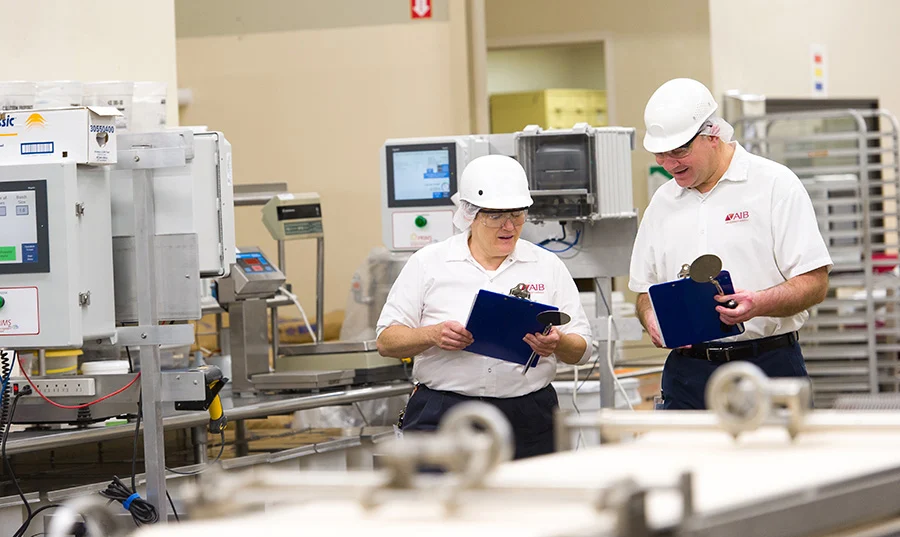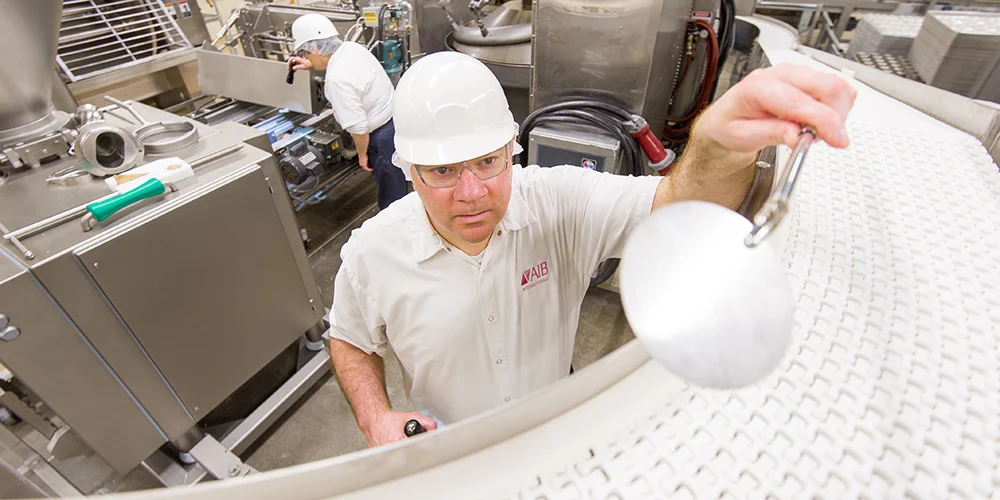What Are Food Safety Audits and Inspections and Why Do They Matter?
Food safety audits and food safety inspection processes are distinct yet complementary methods designed to protect consumers and maintain regulatory compliance. A food safety inspection is typically a routine check aimed at identifying immediate hazards in food handling environments, while audits are more comprehensive evaluations that assess the overall effectiveness of food safety management systems.
The food industry faces increasing pressure to prevent contamination, foodborne illnesses, and regulatory violations. A single safety lapse can lead to product recalls, legal repercussions, and lasting damage to brand reputation. Both audits and food safety inspections serve as essential safeguards, yet many food businesses struggle to understand when and how to implement each one effectively.
Understanding the key differences between food safety audits and food safety inspections is crucial because using the wrong approach at the wrong time can leave gaps in your safety protocols. Inspections catch problems before they escalate into crises, acting as your first line of defence. Audits provide the strategic oversight needed to ensure your food safety management systems operate effectively over time.
This comparison highlights how audits and food safety inspections work together to build a strong and reliable safety framework. Knowing their distinct purposes, methodologies, and outcomes enables food businesses to allocate resources wisely and ensure comprehensive protection against food safety risks.

What Are Food Safety Inspections?
Food safety inspections are systematic examinations of food handling environments designed to identify and document potential hazards that could compromise food safety. These routine workplace safety checks serve as the frontline defence against contamination, ensuring that food preparation areas, equipment, and practices meet established safety standards at any given moment.
The primary objective centres on hazard identification—spotting problems before they escalate into serious food safety incidents. Inspectors scrutinise physical conditions, observe food handling practices, check temperature controls, examine storage areas, and verify that equipment functions properly. This real-time assessment captures the current state of operations, identifying issues such as cross-contamination risks, inadequate sanitation, improper food storage temperatures, or pest activity that require immediate corrective action.
How Often Do Food Safety Inspections Occur?
The frequency of food safety inspections varies based on the type of facility, risk level, and regulatory requirements. High-risk establishments like restaurants and food processing plants typically undergo inspections more frequently than lower-risk operations.
Common inspection schedules include:
- Daily inspections: Internal checks performed by staff or supervisors
- Weekly reviews: Routine assessments of critical control points
- Monthly evaluations: More comprehensive internal audits
- Quarterly visits: External regulatory inspections for many facilities
Most inspections are relatively brief, lasting anywhere from 30 minutes to a few hours depending on facility size and complexity. This shorter duration allows inspectors to maintain a regular presence without significantly disrupting daily operations.
Who Conducts Food Safety Inspections?
Inspectors come from various backgrounds and organisations, each bringing specific expertise to the process. Internal personnel such as quality assurance managers, safety officers, or designated team members conduct routine workplace safety checks as part of ongoing operational monitoring. These individuals understand the facility’s unique challenges and can quickly identify deviations from standard procedures.
Regulatory officials from government agencies—including environmental health officers, food safety inspectors, or public health departments—perform external inspections to ensure compliance with legal requirements. These inspectors possess statutory authority to enforce regulations, issue citations, and mandate corrective actions when violations occur.
More about: Why Wireless Temperature Monitoring in Australia Is Growing Rapidly
The Role of Checklists in Hazard Assessment
Tailored checklists form the backbone of effective hazard assessment, guiding inspectors through a comprehensive evaluation process.
What Are Food Safety Audits?
Food safety audits are thorough assessments that look at how a business manages food safety risks. Unlike quick checks, these audits involve detailed reviews of documents, procedures, and daily practices to see if the food safety management system is working well.
Comprehensive Management System Evaluation
A food safety audit goes deep into every aspect of an organisation’s safety protocols. Auditors check if the documented procedures match what actually happens on the ground, looking at everything from supplier verification processes to employee training records. This evaluation of the management system examines how well policies are put into practice every day, finding gaps between what should happen and what really occurs. The process assesses hazard analysis critical control points (HACCP) plans, prerequisite programs, and verification activities that together form the foundation of food safety operations.
Planning and Resource Requirements
Food safety audits require careful planning and resources. Small facilities might need several days for a thorough audit, while larger operations with multiple production lines can take weeks to evaluate properly. The planning phase involves:
- Scheduling audit dates well in advance
- Gathering relevant documentation and records
- Assembling key personnel for interviews
- Preparing facility access and safety requirements
- Allocating staff time for audit participation
Businesses must assign personnel to support the audit process, including quality assurance managers, production supervisors, and maintenance staff who can explain their specific areas of responsibility.
Independent Third-Party Expertise
Most compliance assessments depend on independent third-party auditors or specialised consultants who bring impartiality to the evaluation. These professionals have certifications in food safety standards such as BRCGS, SQF, or FSSC 22000. Their independence ensures unbiased findings that regulatory bodies and business partners can rely on. Internal audits conducted by company staff have different purposes but lack the credibility that external verification provides for certification or customer requirements.
Record-Keeping and Regulatory Compliance
Auditors spend significant time reviewing documents that show ongoing compliance. They examine:
- Temperature monitoring logs and corrective action records
- Sanitation schedules and verification results
- Supplier approval documentation and certificates
- Employee training records and competency assessments
- Internal inspection reports and follow-up actions
- Pest control records and monitoring data
How Do Food Safety Inspections and Audits Differ in Purpose?
What fundamental objectives separate inspections from audits? Inspections focus on current hazards that need immediate corrective action, while audits look at historical data to assess how well your food safety management system performs over time.
The Inspection Purpose vs Audit Purpose
When an inspector walks through your facility, they’re looking for active threats to food safety. A leaking refrigerator, improper food storage temperatures, or contaminated surfaces require immediate attention. The inspection purpose centres on real-time hazard identification—spotting problems that could compromise food safety right now.
Audits operate from a different perspective entirely. Instead of searching for immediate dangers, auditors examine your documentation, procedures, and compliance records. They’re measuring whether your food safety programmes actually work as designed. An auditor reviews temperature logs from the past six months, analyses your corrective action records, and evaluates if your HACCP plan aligns with current regulations.
Different Objectives Served by Each Process
The distinction becomes clearer when examining what each process aims to achieve:
Inspection objectives:
- Detect visible safety hazards in the physical environment
- Verify compliance with basic hygiene standards
- Identify equipment failures or maintenance issues
- Ensure proper food handling practices during operations
Audit objectives:
- Assess the effectiveness of documented food safety systems
- Evaluate whether procedures are followed consistently
- Identify systemic weaknesses requiring strategic improvements
- Verify regulatory compliance through comprehensive record review
This fundamental difference in hazard identification vs system evaluation explains why facilities need both processes. Inspections catch problems before they cause harm. Audits reveal whether your preventive measures actually prevent problems from occurring in the first place.
How Do Their Scope and Frequency Compare?
Inspection frequency vs audit frequency reveals a fundamental operational difference between these two food safety processes. Inspections occur regularly—daily, weekly, monthly, or quarterly—depending on the specific risks and operational requirements of your food business. This frequent schedule allows for continuous monitoring of day-to-day conditions and immediate identification of emerging hazards.
Audits follow a completely different timeline, typically conducted annually or semi-annually. The extended interval between audits reflects their strategic nature and the comprehensive resources required to complete them properly. A single audit may take several days or even weeks for larger operations, making frequent repetition impractical and unnecessary.
The scope of each process mirrors this frequency difference. Inspections maintain a narrow, operational focus that examines:
- Current workplace conditions and physical hazards
- Immediate food handling practices
- Equipment cleanliness and functionality
- Employee hygiene compliance at the time of inspection
- Specific areas or processes identified as high-risk
Audits cast a wider net across your entire food safety management system, evaluating:
- Historical records and documentation spanning months or years
- Effectiveness of preventive controls and monitoring procedures
- Training programmes and staff competency assessments
- Supplier verification and traceability systems
- Corrective action implementation and follow-through
- Compliance with multiple regulatory standards and certification requirements
This difference in scope means inspections can be completed in minutes to hours, whilst audits demand substantial preparation time, extensive documentation review, and detailed interviews with personnel across all levels of your organisation. The operational nature of inspections makes them suitable for routine checks, whereas the strategic depth of audits provides the comprehensive system evaluation needed to drive long-term improvements and maintain certification standards.
What Methodologies Are Used in Inspections Versus Audits?
How do inspectors conduct their examinations? Inspections follow a structured yet straightforward approach centred on checklist-based assessments. Inspectors use pre-developed checklists that have been created in consultation with workplace representatives, ensuring the assessment tools reflect actual operational conditions and relevant hazards. This collaborative development process means the checklists address specific risks present in that particular food handling environment.
The inspection methodology emphasises direct observation and immediate documentation. Inspectors walk through facilities, observe food handling practices, check equipment conditions, and verify temperature controls. They tick off items on their checklists whilst noting any deviations or hazards spotted during the examination. This hands-on approach allows for quick identification of issues like improper storage, contamination risks, or equipment malfunctions.
What makes audit methodology more complex? Audits demand extensive preparation and multi-layered analysis that goes far beyond simple checklist completion. The audit team begins with detailed planning sessions weeks before the actual audit, reviewing previous reports, regulatory requirements, and company policies. Multiple team members bring specialised expertise to examine different aspects of the food safety management system.
The inspection methodology vs audit methodology distinction becomes clear in data handling. Auditors analyse:
- Historical records and documentation trails
- Employee training logs and competency assessments
- Corrective action reports from previous periods
- Supplier verification records
- Internal monitoring data and trend analysis
- Standard operating procedures and their implementation
Auditors conduct interviews with staff at various levels, trace products through the entire process, and verify that documented procedures match actual practices. They cross-reference multiple data sources to identify patterns, systemic weaknesses, and opportunities for improvement. This comprehensive approach requires days of on-site evaluation combined with off-site analysis to produce detailed findings reports with categorised non-conformances and strategic recommendations.
What Are the Typical Outcomes of Inspections Compared to Audits?
Inspection outcomes vs audit outcomes differ significantly in their format, detail, and immediate impact on food safety operations. Inspections generate straightforward documentation identifying specific hazards that demand prompt corrective action, while audits deliver comprehensive reports with layered findings and strategic recommendations.
Inspection Outcomes
Food safety inspections typically produce concise reports listing observed hazards and non-compliances discovered during the examination. The inspector documents issues such as:
- Temperature control violations in refrigeration units
- Cross-contamination risks in food preparation areas
- Inadequate handwashing facilities or practices
- Pest activity or sanitation deficiencies
- Missing or expired product labels
These findings require immediate attention and corrective measures. The inspection report often includes deadlines for addressing each identified hazard, with follow-up inspections scheduled to verify compliance. The documentation serves as a snapshot of current conditions at the time of inspection.
Audit Outcomes
Audits generate substantially more detailed documentation that categorises findings by severity level. A typical audit report includes:
Major Non-Conformances: Critical failures in food safety management systems that pose significant risks or violate regulatory requirements. These demand urgent corrective action and may affect certification status.
Minor Non-Conformances: Less severe issues that still require attention but don’t immediately compromise food safety. These might include incomplete documentation or procedural inconsistencies.
Observations: Areas for improvement that aren’t technically non-compliant but could strengthen the food safety system. These represent opportunities for enhancement rather than mandatory corrections.
Audit reports also provide actionable recommendations for systemic improvements, trend analysis from previous audits, and strategic guidance for strengthening food safety management systems. The comprehensive nature of audit outcomes enables businesses to understand not just what’s wrong, but why issues occurred and how to prevent recurrence through process improvements.
Why Are Both Food Safety Inspections and Audits Essential?
Food businesses need both inspections and audits because they serve complementary roles in maintaining food safety standards. Neither process can fully replace the other—each addresses different aspects of food safety management that together create a comprehensive protection system.
The Role of Inspections
Inspections provide the frontline defence against immediate food safety risks. Through regular, frequent checks, they catch hazards before they escalate into serious incidents. A daily inspection might identify improper food storage temperatures, whilst a weekly check could spot equipment malfunction or cleaning protocol failures. This routine hazard detection prevents contamination events and protects consumers from immediate harm.
The Role of Audits
Audits offer the strategic oversight that inspections cannot provide. They examine whether your food safety management system actually works as intended over extended periods. An audit might reveal that whilst daily temperature checks occur, the data shows recurring patterns of near-misses that inspections alone wouldn’t connect. This systemic compliance evaluation identifies weaknesses in processes, training gaps, and documentation failures that only become apparent through comprehensive analysis.
The importance of inspections and audits for food safety assurance becomes clear when considering real-world scenarios:
- Inspections catch a contaminated cutting board during service
- Audits reveal inadequate sanitisation procedures that allowed the contamination
- Inspections identify expired ingredients in storage
- Audits uncover failures in the inventory management system that permitted the expiry
- Inspections spot improper handwashing practices
- Audits discover insufficient staff training programmes
Together, these processes create multiple layers of protection. Inspections address what’s happening right now, whilst audits ensure your entire food safety framework remains robust and effective. This dual approach reduces risk exposure, demonstrates due diligence to regulators, and builds consumer confidence in your operations.

Conclusion
Food Safety Audits vs Inspections: What’s the Key Difference? The answer lies in their complementary nature—inspections catch immediate hazards whilst audits evaluate systemic performance. Neither process can replace the other in a robust food safety strategy.
Successful food businesses integrate both approaches into their operations. Regular inspections maintain day-to-day vigilance, identifying hazards before they escalate into serious incidents. Annual audits provide the strategic oversight needed to strengthen management systems, close compliance gaps, and drive continuous improvement.
The audits vs inspections recap is straightforward: inspections are your frontline defence, audits are your strategic review. Together, they create a comprehensive food safety strategy summary that protects consumers, maintains regulatory compliance, and safeguards your brand reputation.
Ready to strengthen your food safety programme? Evaluate whether your current inspection frequency matches operational needs and schedule your next comprehensive audit. The investment in both processes delivers measurable returns through reduced incidents, improved compliance, and enhanced consumer confidence.
Learn about: Why Wireless Temperature Monitoring in Australia Is Growing Rapidly
FAQs
Food safety inspections are routine checks of food handling environments to identify immediate hazards, while audits are comprehensive evaluations of a business’s overall food safety management system to ensure long-term compliance and effectiveness.
Inspections focus on current hazards and require immediate corrective action, whereas audits assess historical records, procedures, and system effectiveness to identify systemic weaknesses and strategic improvements.
Inspection frequency depends on facility risk level and regulations: daily internal checks, weekly critical control point reviews, monthly internal evaluations, and quarterly external regulatory inspections are common schedules.
Internal personnel such as quality assurance managers conduct routine inspections, while external inspectors from government agencies ensure regulatory compliance and have authority to enforce corrective actions.
Audits evaluate how well a business’s food safety management system functions over time, verifying documentation, compliance with procedures, employee training, supplier verification, and overall system effectiveness.
Inspections rely on checklist-based assessments and direct observation of practices, equipment, and facilities, while audits involve detailed document review, staff interviews, product traceability checks, and multi-layered analysis.
Inspections produce concise reports identifying immediate hazards requiring corrective action, whereas audits generate detailed reports with major and minor non-conformances, observations, and recommendations for systemic improvements.
Inspections catch immediate hazards to prevent contamination, while audits provide strategic oversight to ensure preventive measures are effective, creating a comprehensive food safety framework.
Inspections act as the frontline defense against day-to-day risks, and audits ensure that procedures, training, and controls work over time, reducing long-term risk and improving regulatory compliance.
Regular inspections should maintain operational vigilance, while annual or semi-annual audits provide strategic evaluation. Together, they strengthen food safety management, reduce incidents, and enhance consumer confidence.

